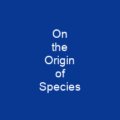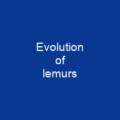Unraveling the Human Evolution Timeline Through Fossil Finds
Imagine peering back through time, millions of years into the past, to uncover the very first steps in our evolutionary journey. The story of human evolution is a fascinating one, filled with milestones that have shaped us into who we are today. But where do we start? How do we piece together this complex puzzle?
The Early Days: Graecopithecus and Beyond
Let’s begin at the very beginning. The chimpanzee–human divergence, a pivotal moment in our evolutionary history, is estimated to have occurred around 7 to 10 million years ago. This period marks the split between the lineages that would eventually lead to modern humans and chimpanzees.
The first fossils we encounter are like tiny pieces of this vast puzzle. Take Graecopithecus, for example, a species dated at around 7.2 million years ago. Could it be one of the earliest ancestors? Or is it just another piece in the complex jigsaw of our evolutionary past?
The Pliocene Epoch: A Time of Transition
As we move into the Pliocene epoch, around 5.3 to 2.58 million years ago, the landscape begins to change. Fossils from this period provide us with a clearer picture of our early ancestors. Species like Australopithecus afarensis (known for the famous ‘Lucy’ fossil) and Australopithecus africanus start to emerge, hinting at bipedalism and tool use.
These early hominins were not our direct ancestors but are crucial in understanding how we evolved. They represent a significant step towards the modern human form, with their unique combination of traits that set them apart from earlier primates.
The Paleolithic Era: A Long Journey
As we delve deeper into the Paleolithic era, spanning 2.58 to 11,500 years ago, we encounter a diverse array of hominin fossils. The Lower, Middle, and Upper Paleolithic periods each bring new insights into our ancient ancestors.
From the Homo erectus found in Dmanisi, Georgia, to the more recent Homo sapiens from sites like Skhul and Qafzeh in Israel, these fossils paint a picture of a species that was gradually becoming more human-like. The tools they used, the bones they left behind—each piece tells a story of survival and adaptation.
The Holocene: Modern Humans
Finally, as we reach the Holocene epoch, around 11,500 years ago, all fossils are from modern humans. This period marks the beginning of agriculture, complex societies, and the cultural developments that define our species.
The transition to anatomically modern humans (Homo sapiens) is a fascinating one. It’s as if we’ve come full circle, from those early bipedal primates to the diverse human populations we see today. Each fossil tells a story of resilience, innovation, and adaptation.
Understanding Our Ancestry
The fossils we find are not just relics of the past; they are windows into our shared history. They remind us that we are all connected by this incredible journey of evolution. From Graecopithecus to modern humans, each step is a testament to the resilience and adaptability of life.
So, as you explore these fossils, ask yourself: What can they tell us about our own origins? How do they shape our understanding of what it means to be human?

Understanding our past is crucial for understanding ourselves. The journey from the early hominins to modern humans is a story of incredible complexity and beauty, one that continues to unfold with each new discovery.
In conclusion, the study of human evolution through fossils is not just about uncovering the past; it’s about connecting the dots between our ancestors and us. Each fossil tells a piece of this grand narrative, reminding us of our shared heritage and the incredible journey we’ve been on since the dawn of time.
You want to know more about List of human evolution fossils?
This page is based on the article List of human evolution fossils published in Wikipedia (retrieved on November 27, 2024) and was automatically summarized using artificial intelligence.







